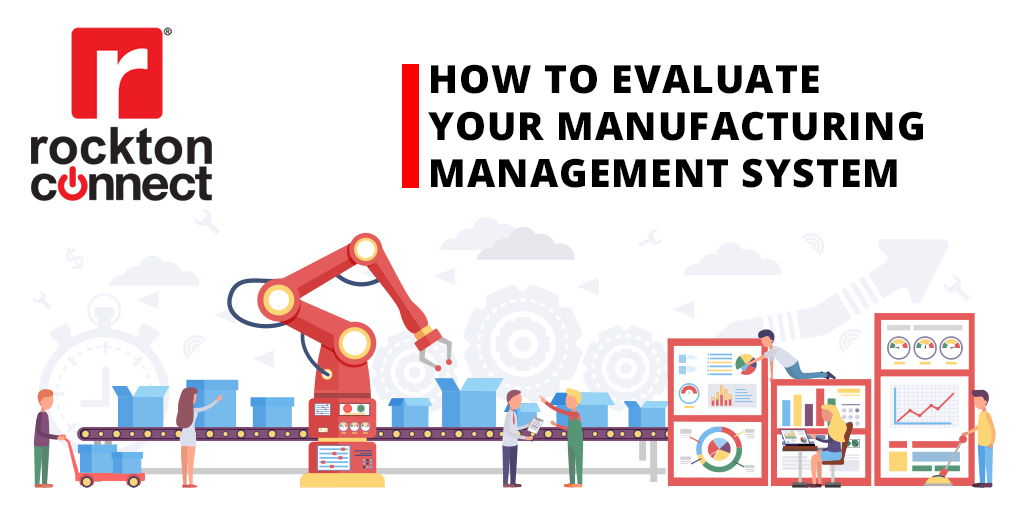
You’ve been tasked with researching and selecting several options for a new management system for your manufacturing company. It’s long overdue and the entire team is breathing a sigh of relief to know that they’ll finally be using an application that was optimized this decade. Inventory management – check. Customization – check. Mobile-friendly – check. Each of these potential ERPs must be a winner, right?
We’d hate to break it to you, but you could be going into the evaluation and comparison process completely unprepared. There’s more to it than lining up the same surface-level features that many products offer today. There’s a forest of information out there and, with each individual feature, there are multiple branches to consider when prioritizing capabilities. So, let’s jump into the five key categories to evaluate when comparing the features and benefits of your manufacturing management system.
Productivity
Whether your team is on-site, in the field, or working from home, the right tools are essential when it comes to efficiently getting things done. Keep this question at the forefront of your decision making: What can the product do to make you and your staff more productive? How should you define productivity? There’s a difference between being productive and just being busy. Your current system could be giving you tons of busy work by making things harder. So, let’s explore what’s really important:
- Is this new management system easy to learn and use?
- Can you access information at any time from any device?
- Does the application automate business processes and approvals?
- Can you work in any currency and convert as needed?
Almost all applications tout high rates of productivity among users. However, to be sure you’re going with the right one, you’ll need to think about the real, specific scenarios you run through regularly. If the product can’t handle those, then you may need to look elsewhere.
Functionality
Here’s where we get down to the nitty-gritty. Meaningful product functionality tends to focus on specific industries or lines of business, so it’s important to understand that a one-size-fits-all approach may not work here. In manufacturing, features like quote-to-cash, inventory management, and production planning are a top priority. Strong third-party software support is also essential so that you can tap into your preferred barcoding or warehousing optimization provider. Check to make sure that your prospective ERP vendor not only includes these must-have features but excels at them.
Technology
When discussing ERP technology, there are key features and phrases we’ve all heard before like true cloud, user experience, and customization. Don’t let a vendor flash a few of these buzzwords around and sell you before you’ve looked under the hood. How responsive is the application’s design? Just because you can access it on your mobile device doesn’t mean that their platform was designed with mobile in mind. If you’re stuck in pinch-and-zoom purgatory while trying to access information, explore a system that’s well-optimized for desktop, tablet, and mobile devices. That’s the vendor that cares about you (and your eyesight).
Value
Let’s talk numbers. You know that implementing a manufacturing management system is an investment. You can calculate how much the software purchase and onboarding will impact your bottom line. But how do you calculate the product’s total value and cost of ownership? You’ll have to dig a little deeper and assess more than what you see upfront, including support, upgrades, and additional server costs. If you have a large team with a steep learning curve to get around, fees can quickly add up if your service agreement doesn’t include unlimited support.
Risk
Pros, cons, and worst-case scenarios – these are the weights that come with any big decision. When analyzing the risks of a new management system, it’s your responsibility to know and be realistic about areas where your business may be vulnerable. To mitigate risk, what you don’t want is an ERP that’s weak or vulnerable in those same areas. Let’s explore a couple scenarios:
- You don’t have the resources to walk your team through a new system any time soon. Can this ERP vendor eliminate time delays and the risk of unplanned costs by deploying quickly?
- Currently, you store data on your local servers. Is the product able to store data in the cloud so that it’s less vulnerable to an attack?
There’s a bit more to the selection process than you might’ve thought. Now that you’re up to speed, you don’t have to develop an entire list of detailed criteria all on your own. We’ve developed a free evaluation checklist to get you started and have you well-equipped to make the best recommendation. Get ready to look like an expert.

